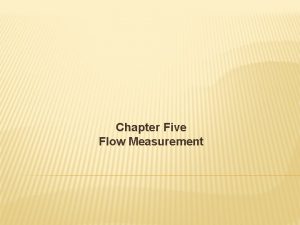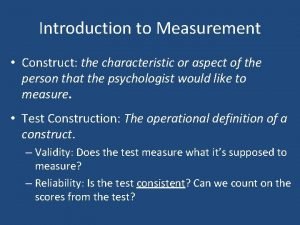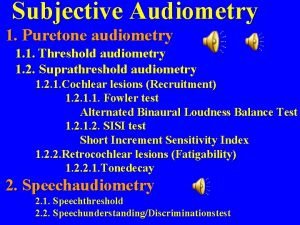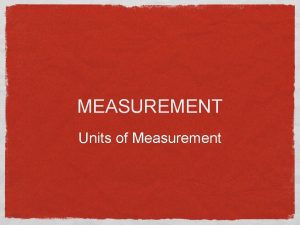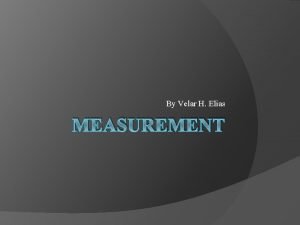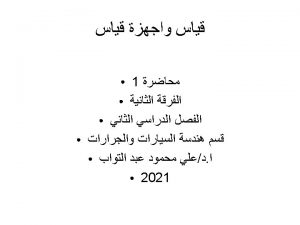AUDIOMETRY INTRODUCTION Audiometry refers to the measurement of








- Slides: 8

AUDIOMETRY

INTRODUCTION • Audiometry refers to the measurement of auditory acuity with the use of an audiometer • The audiometer generates pure tones of varying frequencies which get to the ear via ear phones • The threshold intensity audible to the subject at different frequencies is determined and plotted as percentages of the normal • This helps to assess the degree & range of tone affected in hearing defects • Assessment is precise & objective

PICTURE OF AN AUDIOMETER (praxisdienst. com & alibaba. com)

CLINICAL ASSESSMENT OF DEAFNESS • There are 2 main categories of deafness in terms of pathophysiology; ü Conduction deafness ü Nerve deafness Conduction deafness • Impaired sound transmission in the external or middle ear • Example of causes include; Wax plugging, foreign bodies, thickened eardrums, destruction of ossicles, rigid attachment of stapes & oval window Nerve deafness • Damage to the hair cells or neural pathway • Examples of causes; Prolonged exposure to noise, use of aminoglycoside antibiotics e. g. Streptomycin

TEST PROCEDURE • Conduction and Nerve deafness can be differentiated using two major clinical tests: ü Weber’s test ü Rinne’s test WEBER • Base of a vibrating tuning fork is placed on the vertex of the skull (forehead) • RESULT; ü Normal – Sound is heard equally in both ears ü Unilateral conduction deafness – Louder in diseased ear ü Nerve deafness – Louder in normal ear • BASIS: Environmental noise is masked in the affected ear in conduction deafness, hence the sound is heard better there.

RINNE • Base of a vibrating tuning fork is placed on the mastoid process until sound is no longer heard by the subject. Then it is held in air close to his/her ear • RESULT: ü Normal- Subject hears vibration in air after bone conduction is over ü Conduction deafness – Vibration is NOT heard in air after bone conduction is over ü Nerve deafness – Vibration is heard in air after bone conduction is over • BASIS: Air conduction is prevented by the obstruction to transmission in conduction deafness

FURTHER READING; • Refer to the practical use of the audiometer in the practical manual for more details

THANK YOU

